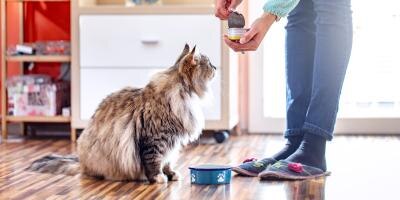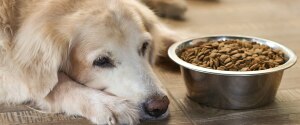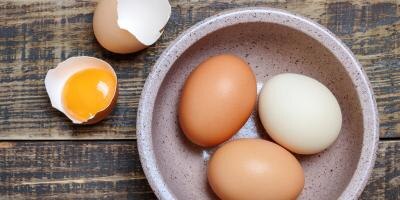
For many owners, it can seem like their dogs are bottomless pits — always hungry and always ready for more — but some dogs just don't have much of an appetite, particularly when it comes to dry food. If your dog won't eat kibble, it could be because they're a picky eater or just aren't hungry, but it could also be a sign of an underlying health issue. If your dog refuses to eat dry food or seems to have less appetite than you would expect, here are some things you can do.
Consult With Your Veterinarian
Anytime your dog has a change in appetite, a call to the veterinarian should be at the top of your list. Lack of appetite can be related to some health issues, and a dog not eating dry food in particular may signal a dental issue that needs addressed. If your dog used to eat normally but has since stopped enjoying meal times, is showing signs of an allergy or just doesn't seem their usual self, your veterinarian can help rule out a medical issue.
Consider If You Have a Picky Eater
One of the most common reasons that a dog won't eat kibble is because they just want something better. If you regularly give your dog other tastier foods, such as wet food or lots of dog treats, he may be refusing to eat dry food hoping that you'll offer up something else. Dogs who are getting human food may also be less than satisfied with their dry food diet. If you think this may be the case, only offer your dog kibble for a few days and see if his appetite eventually picks up.
It's also important to not reward your dog, even indirectly, for picky eating behaviour, such as giving them extra attention or attempting to hand feed them kibble. Dogs are smart, and it doesn't take them long to learn that not eating results in more petting. If you have a dog who has learned to be a picky eater, it may take some time to extinguish that behaviour.
Some dogs are also pickier than others about taste and texture and just don't care for what dry kibble has to offer. In this case, you may be able to entice your dog to eat more if you add a little wet food on top. Remember to decrease the amount of dry food if you go with this option to ensure you're not overfeeding. It may also help to try a few different foods — making sure to transition your dog slowly — to see if there is one formula he prefers over the others.
Remember That Different Dogs Have Different Appetites
While it's a common stereotype that dogs love to eat, it's not true of every pup. Some dogs just don't have much of an appetite, and as long as your dog is eating enough to stay at a healthy weight, it's probably not something to be too concerned about. However, a sudden loss in appetite or a dog who is underweight might indicate the need for more direct intervention and should be checked out by a vet.
If your dog just seems to not be that hungry, consider whether they might be getting food from another source. Are other family members giving them treats or table food? Are they getting scraps from the trash? If your dog is getting calories elsewhere, he won't be as hungry for his kibble.
What Can I Do If My Dog Won't Eat Kibble?
If your vet has ruled out any medical reasons for your dog's lack of appetite, it's likely that it's either a behavioural issue or they just aren't that hungry. There may not be much you can do in the latter case, but there are some strategies you can try if it's a behaviour issue.
Change Up Meal Times
While it may seem counter-intuitive, one strategy to take is to make meals as boring as possible if your dog isn't eating because they want attention or more enticing food. If you're hand feeding him to get him to eat, just put the kibble in the bowl and present it without ceremony. For dogs who are bored with the idea of food, the opposite may work. Consider using an interactive feeding toy that releases pieces of dry food when your dog rolls it around. Very picky dogs may also need a different bowl. Some dogs don't like to see their reflection when they're eating, so a ceramic bowl may be a better choice than stainless steel or glass. It's also important to always clean the bowl between feedings, as leftover food can breed bacteria that can make your dog not want to eat out of that dish.
Limit Meals
If your dog is holding out for human food, it may help to feed him at a different time than when the family is eating. In this case, he may realize that there's no yummy alternative around and be more likely to go ahead and eat the kibble. It can also help make meals a timed event. After you place the food down, give your dog about 15 minutes to eat. If they won't eat, take the food away after that and offer it again later. Your dog may begin to realize that they need to eat when the food is there.
Decrease Volume
If your dog seems to just not want to eat a high volume of food, you may be able to continue to provide for his nutritional needs and help keep him at a healthy weight by switching to a dry dog food specifically designed for "active" breeds. These formulas are usually more concentrated, which means it takes a lower volume of food to get the same calories. Sensitive options may also be a good choice for dogs who have digestive issues or tend to be fussy eaters.
Anytime you're concerned about your dog's lack of appetite, it's important to rule out any underlying illness or medical issue first. Once your vet has given the all clear, you can start to try different strategies to address fussy eating as a behaviour issue. To find out more about why dogs do what they do or how to best care for your pet, check out Purina Canada's articles and tips.
Related articles



